(de Nederlandse versie van dit artikel kunt u hier lezen)
Geese are commercially kept for their meat, eggs, foie gras and down. As geese don't lay many eggs, the market for consumer eggs is minimal. The main countries of the European Union with intensive geese farming are France (foie gras and meat), Hungary (meat, foie gras and down), Bulgaria (meat and foie gras ), Romania (meat and down) and Poland (meat and down). There is still a small scale foie gras production in Belgium. The UK shows an increase in raising freerange geese for their meat. In the USA, California and South Dakota are the main geese-raising states. China is world’s largest producer of down.
The goose is
one of the most intelligent of birds. It has a very good memory and does not forget
people, animals or situations easily. Geese are tremendously social animals and
live harmoniously amongst themselves and with other creatures, also humans. Each bird has it's own personality and the relationships that they form in a flock are both amazing and interesting to
watch. 
In the wild and, to a lesser extent, in a domestic flock, the bond between a breeding pair of geese is very
strong and carries over from year to year. Once they have formed a bond they are faithfull and they show astonishing
loyalties. “Divorce” is extremely
rare. Interestingly, divorced pairs are usually unsuccessful at
raising young.
If a mate dies, the surviving bird often exhibits signs of loss. They swim or walk with their
necks angled forward as if looking for lost mates. In flight, lone
birds call plaintively for missing partners.
Their desire to be good
parents is very strong when given the opportunity to do so. Once the young goslings have hatched they maintain tight
family units. Whenever family members have been separated by space or time they greet one another when they join by waving their
necks and honking loudly.
Knowing all this it is not difficult to understand that intensively farmed geese live an awful short life considering the poor conditions they are usually given and the terrible treatment that they endure.
Breeding parents
Artificial insemination is usually not used for the commercial production of goslings, so from the moment they start to lay, breeding animals are kept together to produce fertile eggs, usually 4-6 females with one gander. For 4 to 5 years they live in confinement either on a raised floor (0.5 m² per bird) or on deep litter (1.0 m² of floor space). This could be in barns with or without roofs. They get seperate nest areas where the geese can lay their eggs. Sometimes they do get access to an outside yard with a concrete floor and/or pasture. However access to swimming water is rare.
Three months before egg production the young breeding animals go through a special preparation period with food deprivation and a light program to “train them” for production. Before they start laying eggs the animals are plucked alive three times. The egg laying period is in springtime, but it is common practice to generate a second egg laying period with light programs, so that over a period of four years the geese will be able to complete six full laying cycles.
Meat birds
Once the goslings have hatched they are raised under lights in big barns on straw. Then after 3 to 4 weeks the so called 'young roast goose' will be fattened up and brought to market at 7 to 8 weeks. The animals are deprived of water for 12 hours before slaughter. These animals will usually not be plucked alive for their down. It is the somewhat older meat goose that is plucked once or twice. They are fattened up until the age of 16 to 22 weeks. These birds are kept in dense groups of 5 to 6 geese per m², 100 to 120 animals in a group.
Goose Down
Foie gras
Many geese are kept for the production of foie gras (fatty liver). Because of welfare reasons foie gras production in the EU is banned in the Netherlands, six of the nine Austrian provinces, Tsjechia, Denmark, Finland, Germany, Italy, Luxembourg, Norway, Poland, Ireland, Sweden, Switserland en the UK as in California Argentina, Turkye en Israël. In the EU foie gras is produced in Belgium, Bulgaria, Spain, France and Hongary. Read further here, here or here.
The following articles/sites were used to write this article:
Personality of Geese Determines Their Foraging Behaviour
Understanding the behaviour of domestic geese
Goose production
These photos were published in Goose Production from FAO
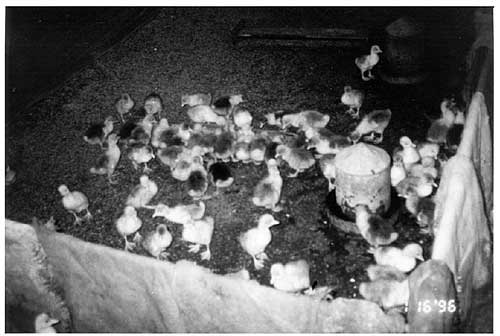
Newly hatched goslings with feed, water and a protective guard (Democratic People’s Republic of Korea) (Source: Buckland, 1995)

Geese on slatted floors (France)
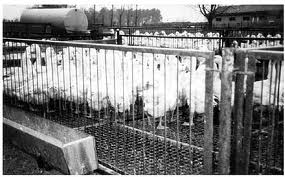
Geese in floor pens being fattened for market (Poland) (Source: Buckland, 1995)
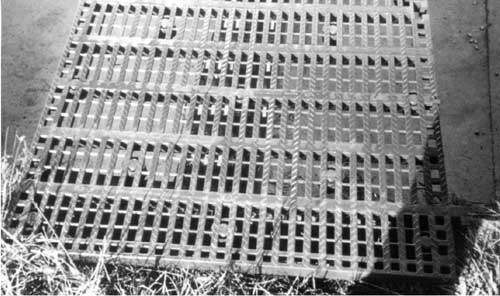
Plastic flooring suitable for both young and adult geese (France)
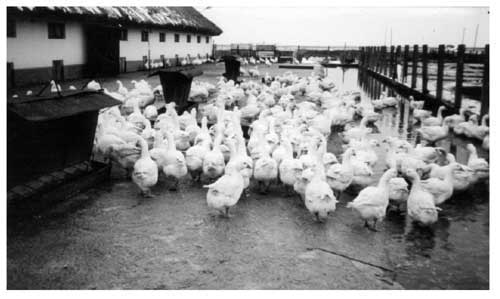
Geese on a deep litter inside the barn and a concrete yard outside (Hungary)
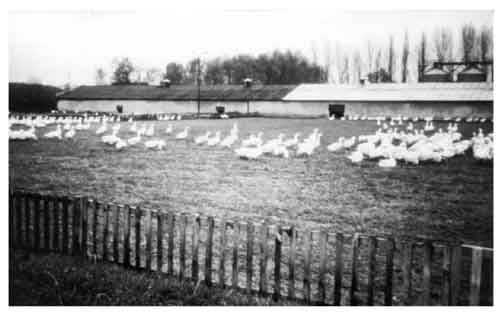
Geese on a pasture with deep litter inside the barn (Poland)
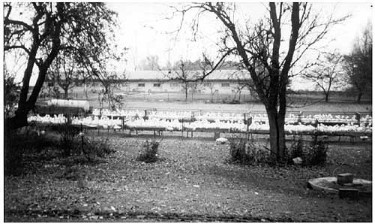
Geese in elevated pens being fattened for market (Poland) (Source: Buckland, 1995)
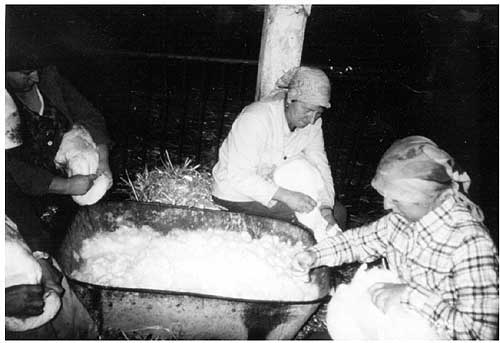
Plucking feathers from live adult geese (Poland) (Source: Buckland, 1995)
Video below
MODERN GOOSE FARMING METHODS
(please note that they don't show images of catching, transporting and slaughtering the birds, which is most stressful for these sentient animals)